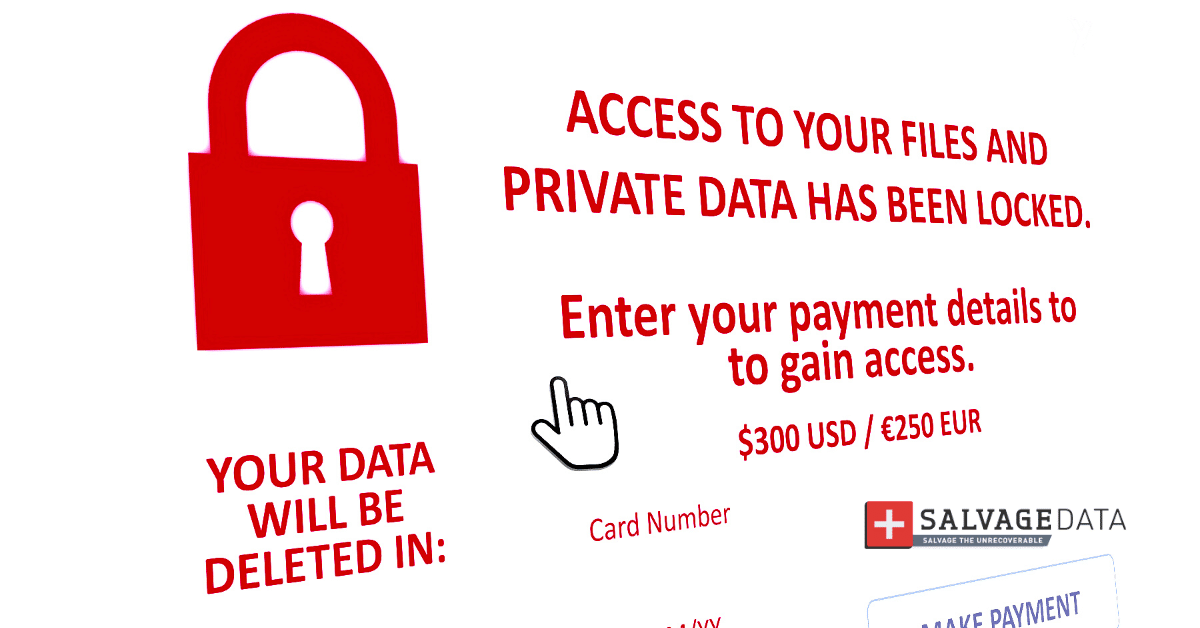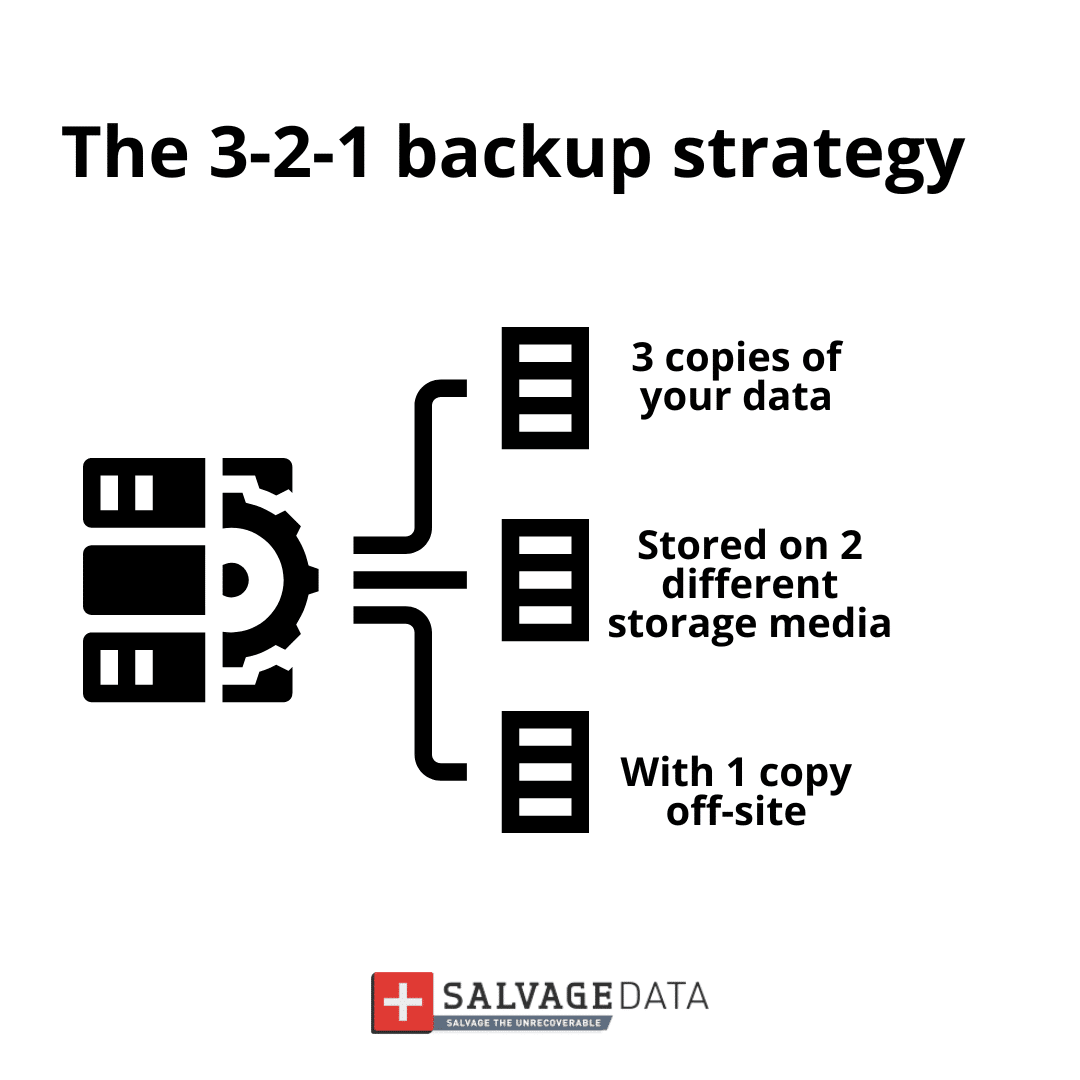Recent Articles
How To Recover Overwritten Files
The Snowflake Data Breach: A Comprehensive Overview
Mac Not Recognizing External Hard Drive: Quick Fix Solutions
How Multi-Cloud Backup Solutions Can Prevent Data Disasters
Capibara Ransomware: What is it & How to Remove
What Should a Company Do After a Data Breach: The Ticketmaster Incident
Secles Ransomware: Removal Guide
What To Do When Your Chromebook Freezes
How to Create Hyper-V Backup
What Is The Best Data Recovery Software For PC

I think there's an issue with my storage device, but I'm not sure Start a free evaluation →
I need help getting my data back right now Call now (800) 972-3282
Every day, we see news worldwide about businesses that suffered from ransomware attacks that resulted in data breaches or huge amounts of ransom payments. Unfortunately, the healthcare industry is not free from this menace. In fact, ransomware attacks in the healthcare sector are growing yearly, becoming one of the threat actor’s favorite target sectors.
The Covid-19 pandemic revealed how vulnerable the healthcare sector is when it comes to cybersecurity. And years later, cybercrime is still growing while the healthcare industry remains vulnerable.
Ransomware attacks in the healthcare sector in numbers
According to a 2022 report from HIPAA Journal, ransomware attacks on healthcare organizations increased by 94% in 2021. They built this report with information from 31 countries, based on interviews with 381 healthcare IT professionals.
The same report states that 61% of healthcare organizations that suffered a ransomware attack paid the ransom. SalvageData experts don’t recommend that the victims pay the ransom. That’s because there’s no guarantee you can get the data back.
Recent research says that ransomware attacks affected more than 100 million people in 2023. Over 100 million individuals were impacted by cyberattacks involving healthcare organizations.
Hospitals are the growing targets with an increased number of attacks. There were 46 hospital systems suffering ransomware attacks in 2023, up from 25 in 2022 and 27 in 2021. At least 141 hospitals were directly affected by ransomware attacks, leading to disruptions in IT systems and patient data access.
Hospitals faced challenges such as redirecting emergency departments, delaying appointments, and experiencing bottlenecks in lab testing and radiology. These disruptions resulted in longer patient stays, slower patient throughput, and poorer patient outcomes. Studies indicated an increase in medical complications and mortality rates following ransomware attacks.
Besides lives and data, the financial ransomware cost of a healthcare data breach reached its highest ever level in 2023, averaging $11 million.
Important: The best action in case of a ransomware attack is to contact the authorities for an official investigation. Then, contact a ransomware data recovery service with experienced professionals. This can increase the chances of full data recovery, despite the encryption.
SalvageData experts have decades of combined experience in safely restoring ransomware-encrypted data. Contact one of our recovery engineers 24/7 for a free consultation.
Pro tip: Read more about Ransomware Activity Targeting the Healthcare and Public Health Sector in the document the FBI elaborated to advise healthcare businesses and organizations.
How to prevent ransomware attacks in the healthcare sector
There are two best actions to prevent data loss from a ransomware attack in the healthcare system: regular off-site data backups and keeping an emergency recovery plan.
So, how to prevent ransomware? Ransomware cannot infect a system without outside assistance from victims or employees, something that cybersecurity experts call social engineering.

1. Train the healthcare workers on cybersecurity
The first line of defense against ransomware is education. Employees of a healthcare workspace must be aware of newer types of ransomware attacks and how to prevent them.
For organizations, this means continually educating employees on safe internet practices, as well as updating systems with the latest patches from hardware manufacturers and software developers.
2. Use strong security software
Ransomware often targets vulnerabilities in operating systems, which can leave your data at risk if those do not receive updates regularly.
In every case of ransomware, it is crucial to back up critical files as soon as they are created or modified, even if they may not always be encrypted by ransomware. This can prevent their loss from translating into complete business failure.
3. Add firewalls
The most important action against a ransomware attack is defense. An advanced firewall service will shield your network from any ransomware attempt, including current or new variants.
Multi-layered security firewalls are the latest technology and offer the best ransomware protection. They provide endpoint security for operational systems, email, and mobile access against malicious upload or phishing scams.
The healthcare sector must also look for a firewall service that will comply with HIPAA requirements.
4. Choose safe backup systems
Regular backups are always a sound decision for hospitals, businesses, or individuals. However, to avoid being left at the mercy of hackers in case your data is held hostage, store your backup in a safer system.
Nowadays, hackers will encrypt your network AND your backup. So invest in a backup system that prevents ransomware as well, and one that can scan files for it.
A versioning backup system that is triggered not only on a time basis but also at any file change will be the best ransomware protection too. Otherwise, you’ll only restore infected files from a vulnerable backup.
SalvageData experts strongly recommend you have at least 3 copies of your sensitive data:
- The original is on your encrypted and secure local server
- A backup on an off-site server
- One on a cloud server

Remember that all copies must be recent and HIPAA-compliant.
5. Build a data recovery plan
Unfortunately, sometimes trying to outsmart relentless advanced ransomware attacks is not effective.
Therefore, a server data recovery plan can’t be ruled out. A ransomware detection tool might come in handy to identify an attack or a data breach as soon as it happens.
The earlier ransomware is detected, and its type identified, the faster recovery can be. Ransomware recovery services, as provided by SalvageData, can decrypt infected data in most cases. If not, our experienced experts can handle negotiations with hackers for you, avoiding further scams or complete data loss.
What is ransomware?
Ransomware is a type of malware that encrypts files on an infected computer and locks them up until a ransom fee is paid. This fee is for the decrypting key, which most of the time doesn’t work or leaves files corrupted.
Like a virus, ransomware can quickly spread and infect a whole network. And it can be just as deadly on a healthcare system since infected computers prevent healthcare workers from accessing hospital systems.
Imagine an already strained hospital without access to a patient’s medical records or scans. Vital treatments are at risk of being delayed or mixed up, the ER becomes chaotic with a backlog, and so on.
Not to mention that a ransomware attack directly violates HIPAA compliance with data privacy.
With ransomware now threatening hospitals and other healthcare institutions, what should these organizations do if they are targeted? Ransomware recovery experts lay out the best course of action ahead.

How does ransomware work?
Ransomware is typically spread through phishing schemes, where employees are tricked into downloading ransomware disguised as legitimate files.
This type of cyberattack can also be introduced into networks by way of exploiting vulnerabilities in unpatched software or hardware systems. When the ransomware is executed, it will often encrypt documents and program files before demanding a ransom fee in exchange for a decryption key.
Ransomware differs from other types of malware because it will display messages or lock infected computer screens until users pay the ransom in full. Also, the encrypted files will have a new name that changes according to the ransomware variant.
Ransoms demanded by ransomware vary depending on how valuable an organization’s data is to its operations and livelihood. Most of the fees are asked in bitcoins.
In the healthcare sector, the main risk of ransomware, after data loss, is the leak of confidential patient data onto public websites.
The healthcare sector can expect more and more sophisticated ransomware attacks in the future. With hospital activities and medical records at risk of disruption and data breach, poor cybersecurity measures can no longer be afforded.
SalvageData engineers have years of experience dealing with encrypted data, as well as being HIPAA and GSA-certified data recovery providers. Rely on our ransomware recovery experts to guide you through an attack, decrypt data, eliminate malware, or even negotiate a ransom for sensible terms.
What to do in case of a ransomware attack?

DO NOT PAY THE RANSOM. There’s no guarantee they will send the decryption key. And, even if you get the key, the data can be corrupted or forever lost.
Victims should immediately implement an incident response plan with cybersecurity professionals whenever ransomware compromises their network. This way, an organization can quickly contain and eliminate malware without risking further data loss.
Ransomware attacks are already becoming more common and often lead to irreparable damage to data, hardware, software, and records. The aftermath can lead to significant downtime for your organization amidst reconstruction efforts.
Ransomware is also continuously evolving in terms of the types of ransoms they demand as well as how they infect systems.
Therefore, organizations need cybersecurity professionals and ransomware recovery experts who stay up-to-date on the latest ransomware trends and mitigation skills.













